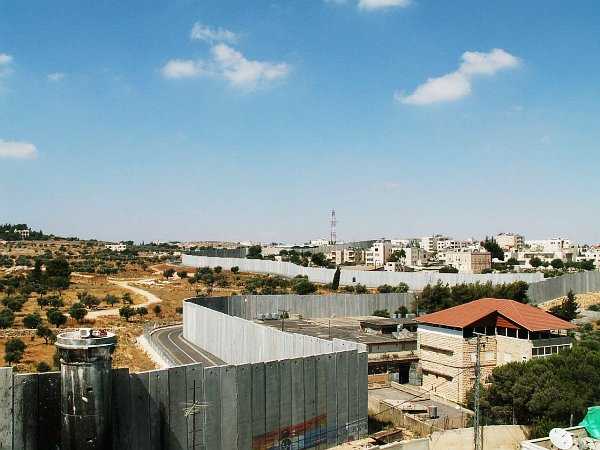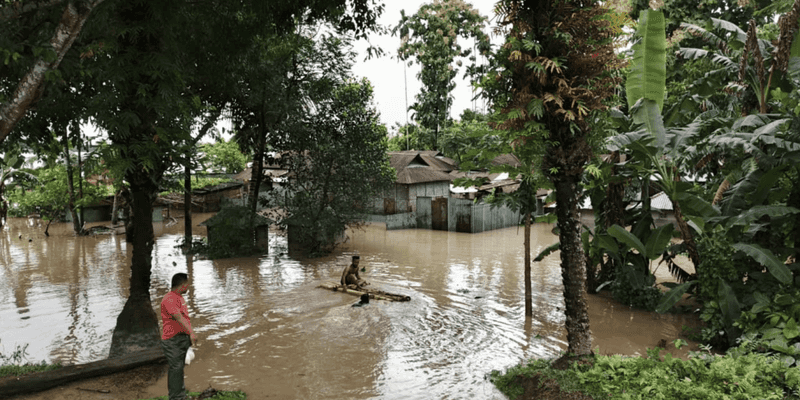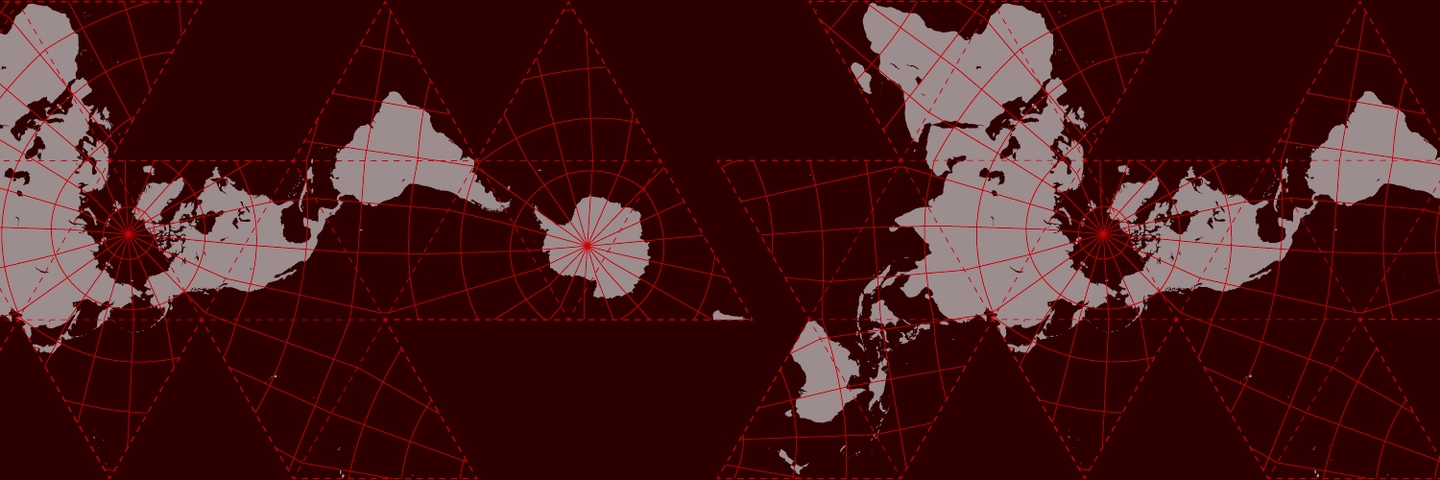
Although Palestinians and Israelis inhabit the same physical terrain, the unequal effects of climate change can be seen in stark relief in Palestine — a disfigured, disjointed, segregated and stratified territory, in which Israel both directly and indirectly sets the rules.
The Israeli occupation— now in its fifty-third year — not only prevents Palestinians from accessing basic resources for climate change adaptation, but also from pursuing longer-term measures. Israel’s own environmental policy can be described as Janus-faced. One of its faces promotes environmental reform and technological development. The other deprives Palestinians of their land, water, and other natural resources. And it has managed to maintain this Janus-faced approach despite wide-ranging international condemnation.
This piece examines the divergent impact of climate change on Palestine-Israel, particularly in the OPT. It argues that the Israeli occupation drastically increases Palestinian vulnerability to the effects of climate change through the appropriation of land and natural resources, as well as restrictions on movement of people, goods and capital. It calls for robust local and international efforts to end the occupation and to hold Israel accountable under the law: minimum standards for any international Green New Deal.
Palestinian Vulnerability by Design
Climate change is expected to impact both Palestine and Israel in two key ways in the coming years: decreased precipitation, with an anticipated annual reduction of up to 30% in the eastern Mediterranean region; and increased temperatures, given a predicted increase between between 2.2 and 5.1°C. The latter is likely to lead to highly disruptive, if not catastrophic, changes to the region’s climate, including increased desertification.
The combination of decreased rainfall and rising temperatures will result in a higher demand for water (an already overexploited resource) that will be in increasingly short supply and could lead to water insecurity. Agriculture, which has always been a cornerstone of the Palestinian economy, will suffer greatly as a result.
However, Palestine’s fragmented political landscape poses some of the greatest challenges to coping with climate change. Three different entities govern the territory between the Jordan River and the Mediterranean Sea: the Israeli government directly presides over the modern state of Israel as well as the occupied and illegally annexed East Jerusalem and the Golan Heights, and — de facto— the occupied Area C, including the fertile Jordan Valley in the West Bank; the Palestinian Authority oversees Areas A and B in the West Bank largely in name, suffering frequent Israeli military incursions; and Hamas controls the Gaza Strip, which has been under Israeli siege for 12 years.
This differentiated political and social reality divorces the OPT from its wider political and geographic context. Palestine’s vulnerability should be understood in the context of more than seven decades of Palestinian displacement, dispossession, and oppression. Hundreds of thousands of Palestinians were made refugees in 1947-48 when Israel was created and are still heavily reliant on aid from the United Nations Relief and Works Agency and other humanitarian organizations; most of these vulnerable communities are beyond the purview of the Palestinian Authority in the OPT.
Nonetheless, the single greatest non-environmental risk facing Palestinians in the OPT is the Israeli occupation, to the extent that the United National Development Programme (UNDP) considers it an environmental “risk” in its own right. Among other factors, restrictions on the free movement of people and goods, the Separation Wall, land grabs, settlement expansion and settler violence, and poor PA governance all threaten Palestinian water and food security and consequently increase climate change vulnerability.
The OPT is subject to the international law of belligerent occupation. Israel, as the occupying power, is legally responsible to meet the needs of the occupied population which, according to theHague Convention, includes the guardianship of natural resources. Additionally, theFourth Geneva Convention prohibits the arbitrary destruction and appropriation of property and the destruction, removal, and disablement of civilian objects indispensable to the civilian population, including agricultural areas, drinking water installations, and irrigation works.
The UNDP cites the ongoing corrosive impact of the Israeli occupation on Palestinian water and agricultural infrastructure as “prima facie breaches of international humanitarian law, requiring independent investigation by the international community.” However, the international community has seldom held Israel to account for these breaches of international law and, under the current Trump Administration in the United States, has emboldened Israeli violations.
The Climate Casualties of Israel’s Occupation
Climate change will affect most sectors of the OPT’s economy, but one of its greatest casualties will be water availability and quality — with deadly results, particularly in Gaza.
Water is not an apolitical resource. The occupation strains water resources and affects areas from health to industry. Palestinians’ main source of drinking water is stored groundwater, and Palestinians rely heavily on aquifers. The western, northeastern, and eastern aquifers are in the West Bank, while in Gaza, the only source of water is the coastal aquifer, which has been subject to over-extraction and pollution in recent years. This is in addition to rising sea levels and the intrusion of seawater, given that Gaza lies on the Mediterranean coast.
Israel has created a complicated bureaucracy of licensing, permits, and access rights designed to control and selectively curtail Palestinians’ access to groundwater. It does this under powers granted by the 1995 Oslo II Accord – initially intended as a five-year arrangement, and still in place 25 years later – which granted Israel temporary control over approximately 80% of water reserves in the West Bank. The PA, citing the inequities written into the Oslo Accords, is seeking water rights over mountain aquifers.
Israel exacts control over water through the Joint Water Committee (JWC), which prohibits any water-related decision without Israeli approval. Surface water (from rivers, streams, creeks, lakes, and reservoirs) comes from the Jordan Valley, the Dead Sea, and the Jordan River, which the JWC prohibits Palestinians from accessing and whose discharge is estimated to decrease significantly over the coming years. Palestinians are also riparians of the Jordan River, affording them water rights. However, since Israel has full control of the headwaters of the Jordan River, Palestinians have no access. The JWC has also denied permits to Palestinians seeking to capture runoff water in dams.
Meanwhile, there are only a few wastewater treatment facilities in the West Bank and hardly any of the treated water is reused in agriculture. Developing new water access or repairing infrastructure is extremely difficult: Israel grants few permits and demolishes buildings and wells made without them.
In addition to preventing enough clean water from entering the Gaza Strip, Israel actively hinders any attempt to build or maintain water infrastructure, such as reservoirs, by restricting imports of fundamental building materials. The results are deadly: 90-95% of the water in Gaza is contaminated and unfit for drinking or irrigation. Contaminated water accounts for more than 26% of all reported diseases in Gaza and is a leading cause of child mortality, at more than12%of child deaths.
The upshot of these measures is significant. The Applied Research Institute–Jerusalem (ARIJ) estimates that only 50.9% of households in the West Bank have access to water on a daily basis. In Gaza, only 30% of households receive a daily water supply. Combined, this means that the OPT has some of the lowest per capita water availability in the world, at 72 liters per capita per day in the West Bank and 96 liters in Gaza, both less than the 100-liter minimum recommended by the World Health Organization. Palestinians not connected to a water grid – such as communities located in Israeli-controlled Area C – often live on just 10-20 liters per capita per day for all uses.
In stark contrast, as of 2013, Israel’s 600,000 illegal settlers collectively used six times more water than the three million Palestinians in the West Bank for domestic use (and amenities like swimming pools and lawns).Additionally, the destructive actions of settlers, who frequently destroy Palestinian property and infrastructure, further intensify Palestinian vulnerability.
A range of adaptation options for the OPT are possible, including flood contingency plans, protection of coastal sand dunes in Gaza, and rehabilitation of wells and other water sources. Yet none of these options will have an impact while the occupation continues. The reallocation of water rights from Israelis to Palestinians is an essential first step, as is ending the siege on Gaza to allow clean water and construction materials for wastewater treatment plants and desalination plants to be imported.
As for agriculture, it is a bedrock of Palestinian society.About 60% of the West Bank population live in 500 rural villages, which are less connected to centralized infrastructure and more dependent on the surrounding area for economic productivity.Economically, agriculture accounts for 11.5% of employment and 21% of all exports.
Olives and their derivatives in food, soap, fuel, and crafts are a staple in Palestinian homes: As of 2010, olive groves comprise 85.3% of all trees in the OPT, and the olive sector contributes 15% of total agricultural income. Culturally, agriculture holds deep symbolism in Palestinian identity, with the farmer and the olive tree representing Palestinians’ rootedness to the land.
Changing rainfall patterns due to climate change pose great risk to the OPT’s agricultural productivity. About 85%of Palestinian agriculture is watered by rain, and approximately half of the water extracted from groundwater wells is used for agriculture. Increased droughts and desertification will thus directly affect the productivity of crops and livestock, while shorter growing seasons and increased water requirements will lead to higher food prices.
These effects are particularly dangerous as there is already widespread food insecurity across the OPT. In 2014, approximately 26% of households were considered either “severely or marginally” food insecure, rising to 46%in Gaza. In Gaza, rising sea levels and saltwater intrusion will harm low-lying coastal agriculture, which makes up 31% of Gaza’s total agricultural production, and will threaten food security in the already vulnerable enclave. Farmers and herders across the OPT will also see their incomes and profits decline, threatening their agrarian way of life and increasing the likelihood of falling into debt and structural poverty.
The occupation damages Palestinian agriculture through land theft and population control. Israel’s expanding settlements and settler-only roads are deliberately built in key strategic locations, including on arable lands in Area C. Israeli restrictions on movement and controlled access to grazing land are further causes of the OPT’s relatively low overall yield.
Along with over 400 checkpoints or roadblocks in the West Bank, a complicated permit system, and the Apartheid Wall, Palestinian farmers not only have less land available for agriculture, but are also denied access to tend to it.
In Gaza, 20% of arable land is restricted from use because it falls within the Israeli-enforced security buffer zone near the border fence with Israel. In many cases, farmers and herders are obliged to buy water from more distant places, incurring higher transportation costs and wasting valuable time. Additionally, Palestinians have limited access to international markets, modern equipment, and fertilizers. A 2009 World Bank report found that if Israeli restrictions were removed and Palestinian access to water were increased, the agricultural sector’s contribution to the OPT’s GDP would expand by as much as 10% and create about 110,000 new jobs.
There are various adaptation options available to limit the effects of climate change on agriculture. In the West Bank, these include better water-efficiency and land-use planning. In Gaza, water-efficiency and community-level support and training would help offset the impact of overexploitation of limited resources exacerbated by climate change. Yet without an end to the occupation and blockade, adaptive strategies will have a very limited impact.
The Way Forward
The restrictions imposed by the occupation are the single greatest challenge Palestinians face — both economically (including lack of free movement of goods and people) and politically (absence of Palestinian self-determination and sovereignty) — destabilizing a population that is already vulnerable to environmental breakdown.
The clearest path to resilience is through political accountability: calling for an immediate end to the occupation and the lifting of the siege in Gaza. The extremist position of the Israeli government (and many of Israel’s allies across the world) makes these suggestions highly unrealistic in the short term, particularly because the occupation is a financially profitable enterprise that allows Israel to dominate the OPT’s natural resources while destroying or preventing the construction of necessary Palestinian infrastructure.
International organization, then — and the coalition that is forming across this very Progressive International — will be essential to end the occupation. Internationally, governments must exert pressure on Israel to adhere to the UN resolutions and international law frameworks which it has consistently flouted. Civil society must do more to incorporate Palestinian liberation within the framework of climate justice and environmental reform.
Climate change is a global threat of catastrophic proportions, but its impact will vary according to communities’ power to implement protection and adaptation measures. With the possibility of impending annexation of some, most or all of the OPT, Palestinians’ control over their resources appears even less likely.
For Palestinians — who will commemorate seventy-two years of the loss of their homeland this month — climate change is not an equalizing phenomenon, but a product of their condition as an occupied people.
Photo: MissyKel
This essay was adapted from an Al-Shabaka's Policy Brief. Read the original here.




